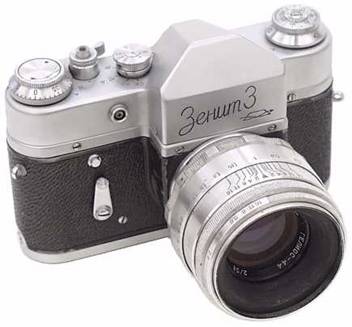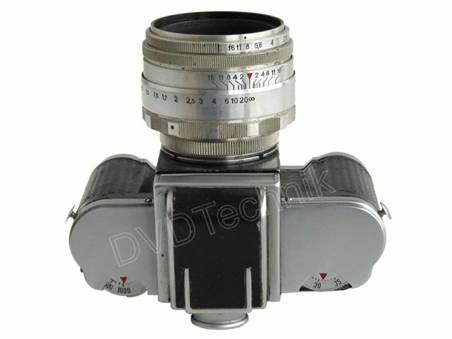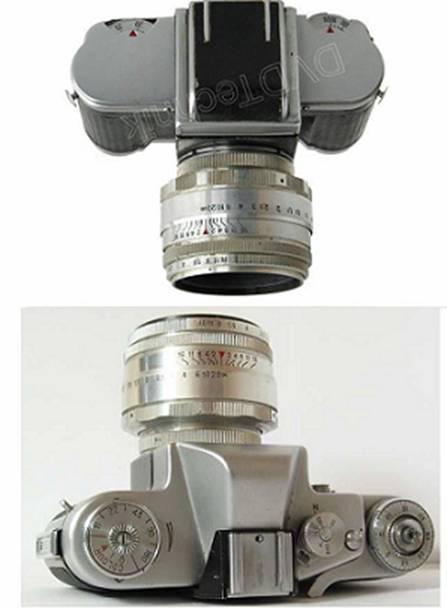
![]()
Sociedad Ibero-Americana de la Historia
de la Fotografia Museo Fotográfico y Archivo Historico "Adolfo Alexander"
Fórum Yahoo [maquinas russas]
3) The Heritage
The GOI Rotary Shutter

4) The Beginnings:
In continuation of the previous chapter….

Michael Kampf and J;L; Princelle show us the original GOI 1947 prototype.


Here the foldable horizontal translation frame advance lever … An unique feature.
The triangle in the back cover is intended to hold camera in its case, freeing the camera’s bottom tripod hole.

Milos Miladek na J.L. Princelle now show the Leningrad Original, the second GOI Prototype of 1948, soon after the “Fotoapprat – Conference”.
Take a look in its compactness, Leningrad X Zorki 3M

Comparing with Zorki 3M of 1953 we can feel the compactness of GOI/Leningrad
design. This was due the shutter concept. The compactness was much more felt
in the Kiev design, see further.

The giant pressure plate releases pressure freeing the film for friction free frame advance; Note in the bottom the fan type shutter mechanics.
Important. This was the first camera to have a built-in universal finder


The special bayonet mount follows Contax/Kiev system.
The focusing helicoids is built in camera.
And those are Kiev Reflex prototypes

With Helios44

With Industar22

Film advance by foldable crank in the bottom
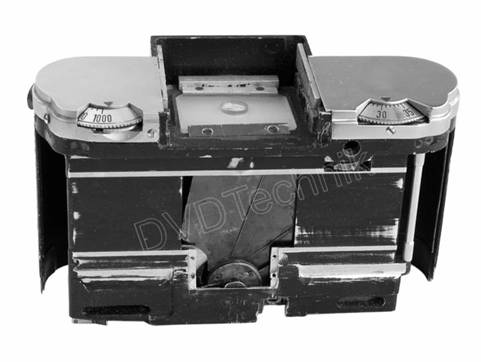
Back of the camera seeing its rotary shutter, and removable prism
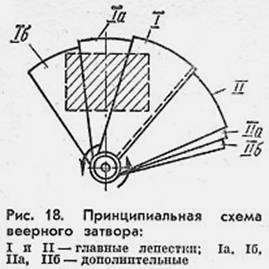
Schematcs fundamentals of the fan type shutter :
I & II – Main sheaths; Ia, Ib, IIa. IIb, - Secondary ones
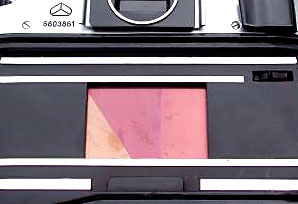
Kiev 10 rear showing its fan shutter
This shutter type is considered by experts as the better formula for a focal plane shutter.
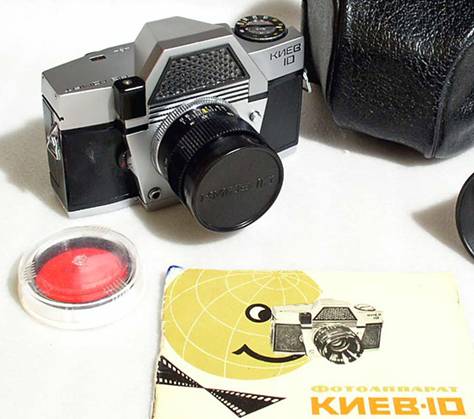
Kiev 10 and 15 with sharing accessory lenses
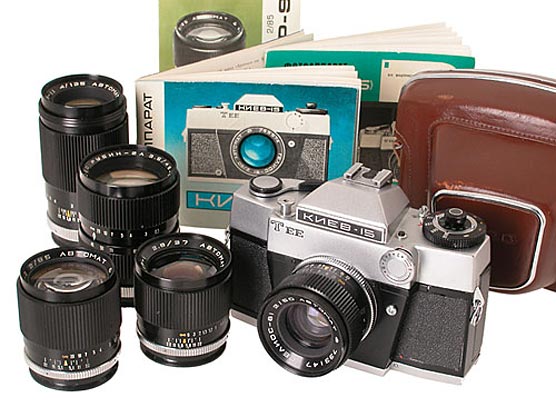
The extraordinary compactness of the rotary shutter design built in the Kiev prototype can be seen in the following comparison photos between Kiev and Zenit 3 / 3M both with the same Helios 44 lens. Those Zenit itself, are probably the most compact commercial SLR built.
